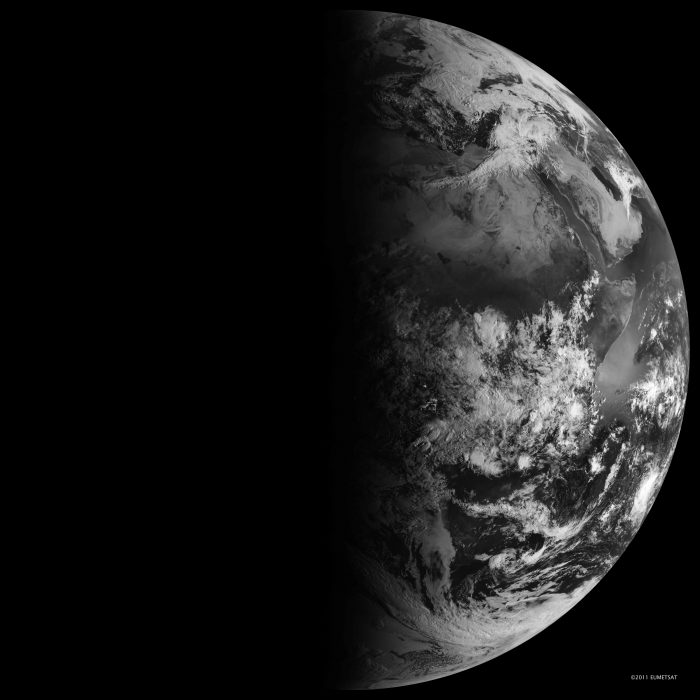Tuesday March 20 was the first day of spring. It was also the spring equinox. The term comes from the Latin meaning "equal night", which is basically exactly what's going on. On the equinox, the length of days and nights in the Northern and Southern Hemisphere are almost identical.
Normally these lengths are different between the two hemisphere because the Earth orbits the Sun while tilted on an axis. Essentially, this means that our planet usually doesn't move around standing straight up on its South Pole. This tilt means that the north and south poles trade being the one leaning closest to the Sun—and therefore getting the longest days.
(At the extreme end of this, our poles take turns either being in total sunlight or total darkness 24 hours a day.)
Drawing a line
Anyway, back to the spring equinox! Because of the position of the planet—a moment of zero tilt—the Sun basically moves directly over the equator. For proof, check out this excellent satellite video from the National Oceanic and Aeronautics Administration (NOAA). The world gleams like a marble as the Sun is reflected along the equator.
Happy Spring #Equinox and happy #firstdayofspring! Today the length of night and day are nearly equal. The days will now become longer at the higher latitudes because it takes the sun longer to rise and set. More satellite imagery: https://t.co/mbgRYot60A pic.twitter.com/kGlGhM5V58
— NOAA Satellites (@NOAASatellites) March 20, 2018
Enjoy the new season, everyone. For those living in the Northern Hemisphere, warmer days are ahead, we promise!
 Sunrise on the spring equinox in 2011. (NASA/Robert Simmon)
Sunrise on the spring equinox in 2011. (NASA/Robert Simmon)










😯
I have always been into astrophysics and the way the planets work. This is soo cool, that cosmos leaves these little surprises for sub to find and marvel at.